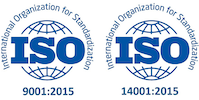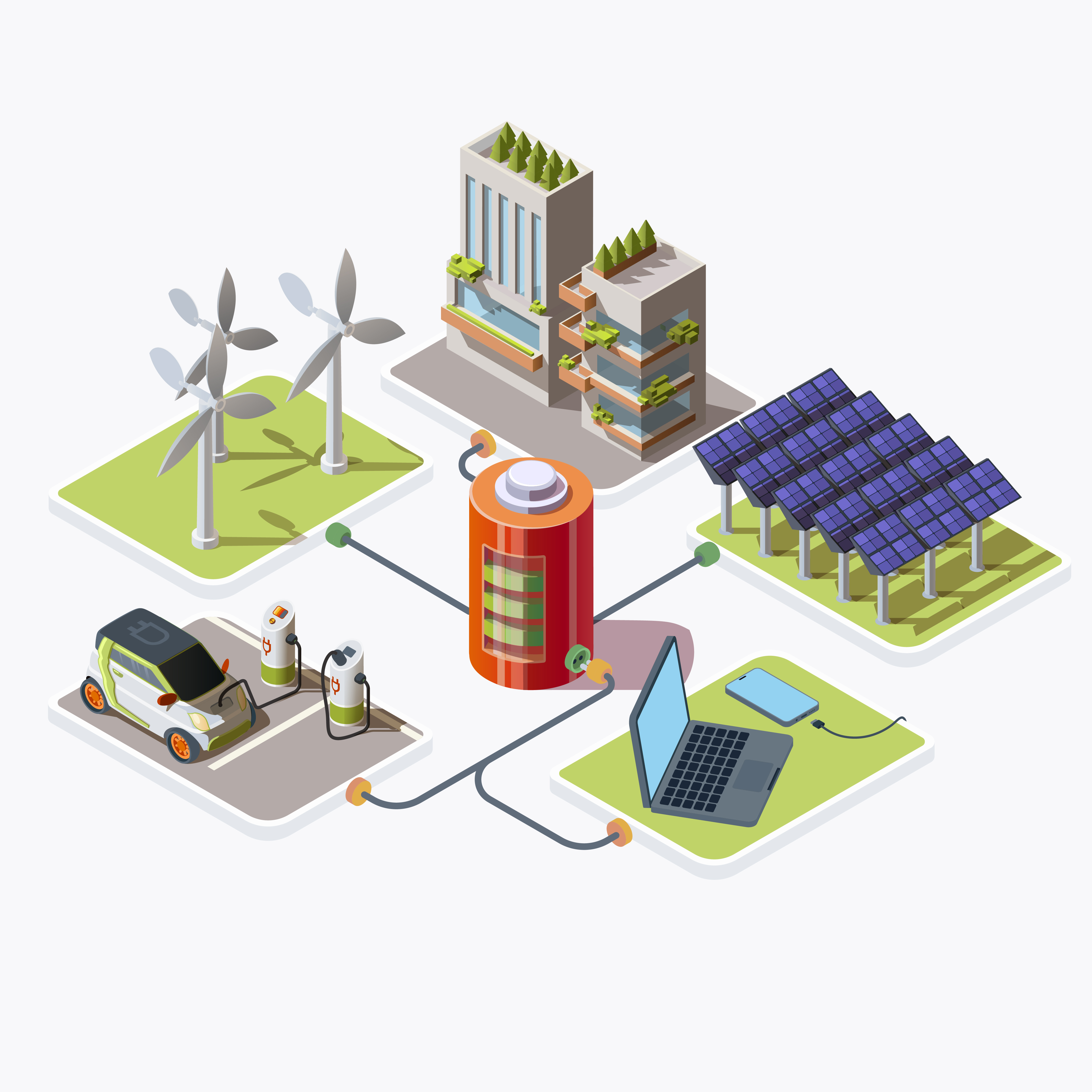Table of Contents
ToggleIntroduction
Solar panels have become increasingly popular as a renewable energy solution for homes, businesses, and industries worldwide. However, understanding the specifications associated with solar panels is crucial for making informed decisions about their selection and installation. In this comprehensive guide, we delve into the various specifications of solar panels, exploring their significance and implications.
Types of Solar Panels
Monocrystalline solar panels are known for their high efficiency and sleek appearance. These panels are made from single-crystal silicon, giving them a uniform dark color. The specifications of monocrystalline panels typically include high efficiency ratings, making them an ideal choice for installations where space is limited or efficiency is paramount.
Polycrystalline solar panels are manufactured using multiple silicon crystals, giving them a speckled blue appearance. While slightly less efficient than monocrystalline panels, polycrystalline panels offer a cost-effective alternative with competitive performance specifications. Understanding the efficiency and characteristics of polycrystalline panels is essential for determining their suitability for specific applications.
Thin-film solar panels are lightweight and flexible, making them suitable for unconventional installations or portable applications. These panels utilize thin layers of photovoltaic material deposited onto a substrate, offering specifications that differ from traditional crystalline silicon panels. Exploring the advantages, disadvantages, and unique specifications of thin-film panels is crucial for evaluating their suitability for various projects.
Efficiency Ratings
Efficiency is a key specification of solar panels, representing the percentage of sunlight converted into electricity. High-efficiency panels generate more electricity per square meter of surface area, maximizing energy production in limited space. Understanding how efficiency ratings impact performance and energy output is essential for optimizing the effectiveness of solar installations.
Power ratings indicate the maximum electrical power output of a solar panel under standard test conditions. These specifications, typically measured in watts (W), provide valuable information about the panel’s performance capabilities. Wattage, voltage, and current specifications influence the panel’s energy production potential and compatibility with other system components such as inverters and batteries.
The temperature coefficient reflects how a solar panel’s efficiency changes with variations in temperature. Understanding this specification is crucial, as solar panel performance can decline in hot weather conditions. Interpreting temperature coefficients helps assess the panel’s resilience to temperature fluctuations and predict its performance in different climates.
Dimensions and Size
The physical dimensions and size of solar panels determine their installation requirements and energy production potential. Larger panels typically have higher wattage ratings and generate more electricity, but they may require more space for installation. Understanding panel dimensions is essential for designing efficient solar arrays and optimizing space utilization.
The quality of materials used in solar panels directly impacts their durability, reliability, and performance over time. High-quality materials withstand environmental stressors such as temperature extremes, humidity, and UV exposure, ensuring long-term functionality. Examining material specifications allows for informed decisions regarding the longevity and resilience of solar panels.
Tolerance ratings indicate the allowable deviation from the panel’s specified power output. Panels with tighter tolerance specifications exhibit more consistent performance, minimizing the risk of underperformance or overperformance. Understanding tolerance ratings helps ensure that installed panels meet performance expectations and deliver reliable energy production.
Certifications and Standards
Solar panels may undergo testing and certification processes to verify their compliance with industry standards and regulations. Recognizing important certifications, such as UL (Underwriters Laboratories) or IEC (International Electrotechnical Commission), provides assurance of quality and safety. Compliance with relevant standards ensures that solar panels meet specific performance and safety criteria.
Solar panels utilize different types of solar cells, including monocrystalline, polycrystalline, and thin-film variants. Each cell type offers unique specifications and performance characteristics, influencing the panel’s efficiency, cost, and suitability for various applications. Differentiating between cell types helps select the most appropriate panels based on project requirements and budget constraints.
Over time, solar panels may experience a gradual decline in performance known as degradation. Understanding the degradation rate specification allows for the prediction of long-term performance and the estimation of energy production over the panel’s lifespan. Minimizing degradation through proper maintenance and selection of high-quality panels maximizes the return on investment in solar energy systems.
Shading Performance
Shading can significantly impact the efficiency and output of solar panels by obstructing sunlight and reducing energy production. Panels with superior shading performance specifications minimize the effects of shading, maintaining consistent performance even in partially shaded conditions. Evaluating shading tolerance specifications helps optimize the placement and configuration of solar arrays to mitigate shading effects.
Inverters are essential components of solar energy systems, converting the direct current (DC) electricity generated by solar panels into alternating current (AC) electricity usable by household appliances and the electrical grid. Ensuring compatibility between solar panels and inverters involves matching their electrical specifications, such as voltage and current ratings. Compatible components maximize system efficiency and reliability.
The mounting and installation specifications of solar panels dictate the structural and electrical considerations necessary for safe and effective deployment. Roof-mounted and ground-mounted systems have distinct installation requirements, including tilt angle, orientation, and spacing between panels. Adhering to installation specifications ensures proper alignment, stability, and functionality of solar arrays.
Maintenance Needs
Regular maintenance is essential for preserving the performance and longevity of solar panels. Maintenance requirements vary based on panel specifications, environmental conditions, and installation factors. Cleaning, inspection, and upkeep activities help prevent debris buildup, shading, and degradation, optimizing energy production and system efficiency over time.
Solar panels are exposed to various environmental factors that can affect their performance and durability. Specifications related to weather resistance, temperature tolerance, and durability against environmental stressors ensure reliable operation in diverse climates and conditions. Assessing environmental specifications helps select panels that can withstand local weather patterns and environmental challenges.
Warranty coverage provides protection against defects, performance issues, and premature failure of solar panels. Understanding warranty specifications, including coverage duration, terms, and conditions, is essential for safeguarding investments in solar energy systems. Manufacturers’ warranties offer assurance of quality and reliability, providing peace of mind to solar panel owners.
Price vs. Performance
The cost-effectiveness of solar panels depends on their performance specifications relative to their price. Balancing price and performance involves evaluating the cost per watt and assessing the return on investment based on energy production estimates. Understanding the relationship between price and performance helps identify the most economical and efficient solar panel options.
Efficiency is a critical factor in determining the performance and cost-effectiveness of solar panels. Higher efficiency panels typically command a premium price due to their superior energy production capabilities. However, evaluating efficiency specifications in relation to cost allows for cost-effective decision-making and optimal utilization of available budget resources.
The lifespan of solar panels influences their long-term performance, reliability, and economic viability. Understanding the expected lifespan based on panel specifications helps assess the return on investment and plan for system maintenance and replacements. Factors such as material quality, degradation rate, and environmental conditions impact panel longevity and durability.
Installation Requirements
Solar panel installations must adhere to electrical and structural specifications to ensure safe and reliable operation. Compliance with local building codes, permit requirements, and utility regulations is essential for avoiding legal and safety issues. Understanding installation requirements helps plan and execute solar projects efficiently while meeting regulatory standards and industry best practices.
Many regions offer incentives, rebates, and tax credits to promote the adoption of solar energy systems. Qualifying for these incentives often requires compliance with specific installation and performance specifications. Understanding incentive eligibility criteria and documentation requirements helps maximize financial benefits and offset the initial investment in solar panel installations.
Solar panels must be compatible with the roof type and structure to ensure secure and efficient installation. Different roofing materials, slopes, and orientations require specific mounting solutions and installation techniques. Assessing roof compatibility specifications helps determine the feasibility and viability of solar panel installations on different roof types.
Integration with Battery Systems
Solar panel systems can be integrated with battery storage systems to store excess energy for later use. Compatibility between solar panels and battery systems involves matching electrical specifications, communication protocols, and charging capabilities. Optimizing integration specifications ensures seamless operation, energy autonomy, and resilience against grid outages.
Smart technology features enhance the functionality, efficiency, and control of solar panel systems. Specifications related to monitoring, control, and remote access allow for real-time performance tracking, optimization, and troubleshooting. Integrating smart technology features into solar installations improves energy management, enhances user experience, and maximizes system efficiency.
Solar panels’ performance in low-light conditions impacts their energy production potential during cloudy days or indirect sunlight. Specifications related to low-light performance and efficiency indicate the panel’s ability to generate electricity under suboptimal lighting conditions. Evaluating low-light performance specifications helps assess the reliability and resilience of solar installations in varying weather conditions.
Micro-Inverter vs. String Inverter
Inverters play a crucial role in converting solar panel DC electricity into usable AC electricity for household consumption or grid export. Micro-inverters and string inverters are two common types of inverters with distinct specifications and performance characteristics. Understanding the pros and cons of each type helps select the most suitable inverter solution based on system requirements and preferences.
The aesthetic appearance of solar panels can influence their acceptance and integration into architectural designs and landscapes. Specifications related to panel color, frame design, and mounting options affect their visual impact and compatibility with surrounding structures. Considering aesthetic specifications allows for the selection of panels that complement the design aesthetic and enhance curb appeal.
Grid-connected solar panel systems must comply with utility interconnection standards and regulations to ensure safe and reliable operation. Specifications related to grid connection, voltage compatibility, and safety protocols govern the interaction between solar installations and the electrical grid. Adhering to grid connection requirements facilitates seamless integration, grid stability, and regulatory compliance.
Off-Grid Capability
Off-grid solar panel systems operate independently of the electrical grid, relying on battery storage for energy autonomy. Specifications related to off-grid capability include battery capacity, energy management, and backup power features. Designing off-grid systems with adequate specifications ensures reliable power supply in remote locations or during grid outages.
Tracking systems optimize solar panel performance by adjusting their orientation to maximize sunlight exposure throughout the day. Single-axis and dual-axis tracking systems offer different specifications and performance benefits, impacting energy production and system efficiency. Evaluating tracking system specifications helps determine the suitability and cost-effectiveness of implementing tracking technology.
The angle and orientation of solar panels influence their exposure to sunlight and energy production efficiency. Specifications related to installation angle, azimuth, and tilt optimize solar panel orientation for maximum solar irradiance. Understanding optimal installation angles and orientations ensures optimal energy capture and system performance in different geographic locations.
Energy Output Predictions
Accurate energy output predictions are essential for sizing solar panel systems and estimating their economic viability. Specifications related to energy yield, performance modeling, and simulation tools facilitate accurate predictions based on geographic location, weather patterns, and system configurations. Utilizing energy output prediction specifications helps optimize system design and investment decisions.
Integrating solar panel systems with energy management systems enhances energy efficiency, grid stability, and user control. Specifications related to compatibility with home energy management systems, smart grid interaction, and demand response capabilities enable seamless integration and operation. Incorporating energy management system specifications maximizes the benefits of solar energy and enhances overall energy management.
Fire safety is a critical consideration in solar panel installations to mitigate the risk of fire hazards and ensure occupant safety. Specifications related to fire resistance, flame spread, and smoke production determine the panel’s compliance with building and electrical codes. Evaluating fire safety ratings helps select panels that meet stringent safety requirements and minimize fire risks.
Voltage and Amperage Compatibility
Solar panel specifications include electrical parameters such as voltage and amperage, which must be compatible with other system components. Matching panel output specifications with inverter and battery requirements ensures efficient energy conversion and system compatibility. Assessing voltage and amperage compatibility specifications prevents compatibility issues and optimizes system performance.
The complexity of solar panel installations varies based on factors such as system size, configuration, and mounting options. Understanding installation complexity specifications helps assess the feasibility of DIY installations versus professional installations. Considering installation complexity ensures safe, code-compliant installations and avoids costly mistakes or complications.
Solar panel installations must comply with local regulations and permitting requirements to ensure legal and regulatory compliance. Understanding local zoning ordinances, building codes, and permit application processes is essential for successful project planning and execution. Adhering to regulatory specifications avoids potential delays, fines, or enforcement actions during the installation process.
Remote Monitoring and Maintenance
Remote monitoring and maintenance capabilities enhance the performance, reliability, and efficiency of solar panel systems. Specifications related to monitoring, diagnostics, and remote access allow for real-time performance tracking and proactive maintenance. Integrating remote monitoring and maintenance specifications facilitates timely interventions, troubleshooting, and optimization of system performance.
The weight and structural load of solar panels influence the design and integrity of mounting systems and support structures. Specifications related to panel weight, wind load, and snow load ratings ensure structural stability and safety. Evaluating weight and structural load specifications helps design robust and resilient mounting systems capable of withstanding environmental stresses.
Solar panel systems can be integrated with energy storage systems to store excess energy for later use, improving energy self-sufficiency and resilience. Specifications related to battery chemistry, capacity, and charging compatibility govern the integration of solar panels with energy storage solutions. Optimizing compatibility with energy storage systems enhances system performance and flexibility.
Water Resistance
Water resistance is essential for ensuring the longevity and performance of solar panels, particularly in outdoor environments exposed to rain, snow, and humidity. Specifications related to waterproofing, ingress protection, and corrosion resistance prevent water damage and ensure reliable operation. Assessing water resistance specifications helps select panels suitable for outdoor installations and harsh weather conditions.
The reputation and reliability of solar panel manufacturers influence the quality and performance of their products. Specifications related to manufacturing processes, quality control measures, and warranty coverage provide insights into the manufacturer’s commitment to product excellence. Choosing reputable and reliable manufacturers ensures high-quality panels, dependable performance, and responsive customer support.
Understanding the factors contributing to panel degradation is essential for maintaining long-term performance and reliability. Specifications related to degradation mechanisms, such as UV exposure, moisture ingress, and material degradation, inform preventive maintenance strategies. Minimizing degradation through proper maintenance and selection of durable panels maximizes the lifespan and efficiency of solar installations.
Future Technological Developments
The solar energy industry continues to evolve with ongoing technological advancements and innovations. Specifications related to emerging technologies, such as next-generation photovoltaic materials, smart coatings, and advanced manufacturing techniques, offer glimpses into the future of solar panel technology. Anticipating future technological developments enables proactive planning and investment in cutting-edge solar solutions.
Conclusion
In conclusion, understanding the specifications associated with solar panels is essential for making informed decisions about their selection, installation, and operation. By delving into the various specifications discussed in this guide, individuals and organizations can navigate the complexities of solar panel technology and harness its full potential for clean, renewable energy generation. Whether considering efficiency ratings, installation requirements, or future technological developments, a comprehensive understanding of solar panel specifications empowers stakeholders to maximize the benefits of solar energy and contribute to a sustainable future.
FAQs
What are the key specifications to consider when evaluating solar panels?
When evaluating solar panels, key specifications to consider include efficiency ratings, power ratings, temperature coefficients, dimensions and size, material quality, and warranty details. These specifications provide valuable insights into the panel’s performance, durability, and suitability for specific applications.
How do solar panel efficiency ratings impact energy production?
Solar panel efficiency ratings indicate the percentage of sunlight converted into electricity. Higher efficiency panels generate more electricity per square meter of surface area, maximizing energy production in limited space. Understanding efficiency ratings helps optimize energy yield and system performance.
What role do warranties play in solar panel selection?
Warranties provide protection against defects, performance issues, and premature failure of solar panels. Understanding warranty details, including coverage duration, terms, and conditions, is essential for safeguarding investments and ensuring long-term reliability. Manufacturers’ warranties offer assurance of quality and customer support.
How do environmental factors affect solar panel performance?
Solar panels are exposed to various environmental factors that can impact their performance and durability. Specifications related to weather resistance, temperature tolerance, and durability ensure reliable operation in diverse climates and conditions. Assessing environmental specifications helps select panels that can withstand local weather patterns and environmental challenges.
What are the future technological developments in solar panel technology?
The solar energy industry continues to evolve with ongoing technological advancements and innovations. Future developments may include next-generation photovoltaic materials, smart coatings, and advanced manufacturing techniques. Anticipating these developments enables proactive planning and investment in cutting-edge solar solutions for enhanced efficiency and performance.







